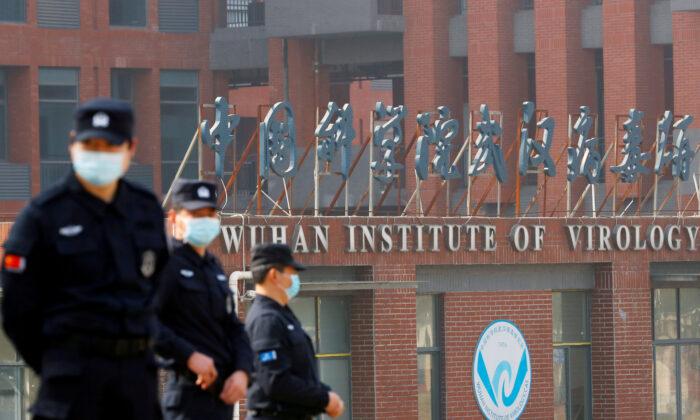A U.S. scientist recently testified at a U.S. Senate hearing that his research provides evidence that the Wuhan Institute of Virology (WIV) has conducted synthetic biology research on the deadly Nipah virus. Some scientists are expressing concern about Canada sending Nipah and Ebola viruses to a lab potentially engaged in such research.
Quay, who was previously on the faculty of Stanford University’s School of Medicine for about a decade, also said the work on Nipah at the Wuhan lab wasn’t conducted at biosafety level 4 (BSL-4) facilities, which have the highest level of biosafety, but rather at BSL-2 or BSL-3 facilities with lower safety protocols.
“This is the most dangerous research I have ever encountered,” he said.
In an interview with The Epoch Times, Quay said international agreements forbid synthetic biology on certain lethal viruses, such as Nipah and Ebola. Synthetic biology involves creating or redesigning biological entities and systems. An example of synthetic biology is gain-of-function research, which involves increasing the lethal level or the transmissibility of pathogens.
Canada’s National Microbiology Laboratory (NML) in Winnipeg shipped samples of the Nipah and Ebola viruses to the WIV in March 2019 after receiving a request from the Chinese lab. The shipment was arranged by Chinese-born scientist Xiangguo Qiu, who worked at the NML at the time, with permission from her superiors. Qiu and her husband, Keding Cheng, were the subjects of a Royal Canadian Mounted Police raid at the lab in July 2019 and were later fired for undisclosed reasons.

Quay said his research was based on examining the information from early COVID-19 patients that China had uploaded to international databases and finding “20 unexpected contaminants” not expected to be found in human specimens, including the Nipah virus and other materials, such as honeysuckle genes. He said these materials were likely contained in the specimens because of cross-contamination from other research at the WIV.
Quay said that except for the Nipah virus, the other 19 items that he and his collaborators found that “shouldn’t be in a human” were published in scientific papers by the WIV, with the institute explaining the work they were doing with honeysuckle genes or horse viruses, for example.
“So 19 of our findings were validated that we were accurately testing what had been going on in the laboratory the previous two years. But one thing they didn’t publish on was this Nipah virus work. There’s no publication on that,” he said.
Quay said the strain of the Nipah virus that they found wasn’t the same as the strain that Canada sent to the WIV.
Joe Wang, who formerly spearheaded a vaccine development program for SARS in Canada with one of the world’s leading pharmaceutical companies, says it’s concerning for Canada to send virus samples to a lab engaging in such research.
“At the very least, the WIV could be using the samples Canada sent for comparative purposes with the synthetic biology research on the other Nipah strain,” said Wang, who’s now president of NTD Television Canada, a sister media outlet of The Epoch Times.
Bernard Massie, a virology researcher who retired from the National Research Council of Canada as an acting director general, said he would “think twice” before sending deadly virus samples to the WIV. He noted that with today’s technology, it’s also practical for labs to construct their own virus sequences but that takes more effort.
“It’s certainly much faster to get a viral isolate than to build it every time. It’s more convenient,” Massie said in an interview.
The Epoch Times contacted the Public Health Agency of Canada (PHAC), which is in charge of the NML, but the agency didn’t provide any comments in relation to Quay’s findings. A spokesperson said in an email: “All transfers from the NML follow strict protocols, including requirements under the Human Pathogens and Toxins Act, the Transportation of Dangerous Goods Act, the Canadian Biosafety Standard, and standard operating procedures of the NML.”
Internal NML documents released by Parliament show that when an NML manager asked why the lab was being asked by the WIV for virus samples, a staff member said that historically it’s been easier to get material from the NML compared to U.S. labs and that nearby labs don’t have the ability to ship such samples.

During a parliamentary committee meeting in March 2021, members of Parliament (MP) challenged the NML’s senior management on why the lab allowed the shipment of the Nipah and Ebola viruses to the WIV.
NML’s acting scientific director general, Guillaume Poliquin, told MPs that the lab only sent the samples to the WIV after receiving assurance that no gain-of-function research would take place.
NML
Before she was ousted from the NML, Qiu traveled several times to the WIV, helping train personnel at the lab on level 4 biosafety.Qiu and Cheng, along with a group of Chinese students, were escorted from the NML in July 2019 amid a police investigation. The two were formally fired from the lab in January 2021.
The Canadian federal government has refused to provide details of why Qiu and Cheng were fired, citing privacy and national security concerns. This has been challenged by opposition parties, with MPs in the House of Commons issuing an order in the previous Parliament requiring the government to disclose the information.
The government took the speaker of the House to court seeking to withhold the documents, then later dropped the court case once an election was called in August 2021 and Parliament was dissolved.





